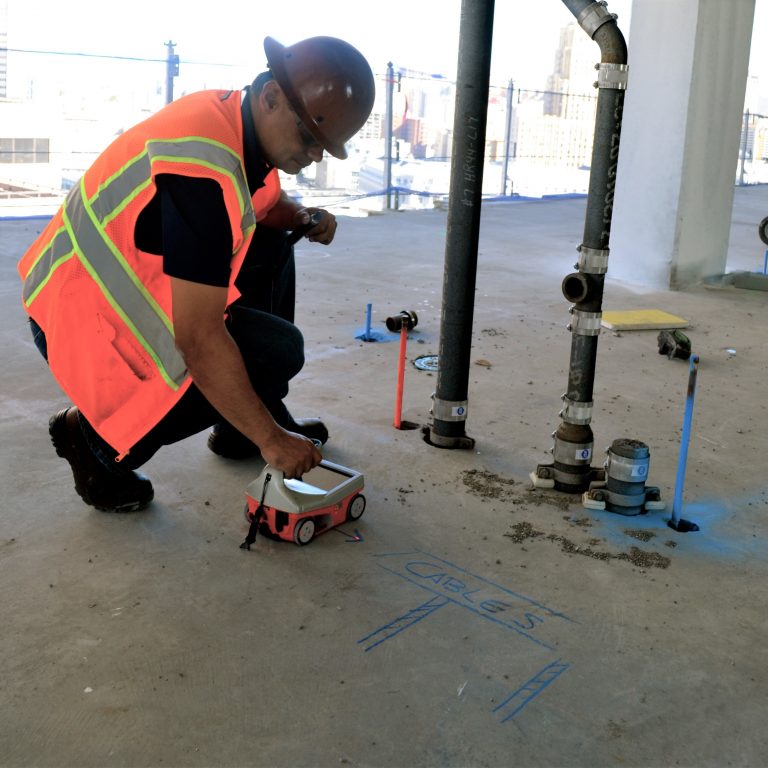Concrete Scanning: An Important Step Towards Ensuring Architectural Honesty and Security
In the realm of construction and framework upkeep, the relevance of concrete scanning can not be overemphasized. By employing sophisticated modern technology and methods, concrete scanning serves as a critical tool in guaranteeing that the integrity and safety and security of bridges and structures are upheld to the highest possible criteria.
Value of Concrete Scanning
Concrete scanning plays a crucial duty in making certain the architectural integrity and safety of structures and framework projects. By using sophisticated innovations such as ground-penetrating radar (GPR) and electromagnetic induction, professionals can non-destructively examine concrete frameworks to detect prospective flaws, gaps, embedded things, and reinforcement format. This process enables very early detection of abnormalities that can compromise the stability of a structure, preventing pricey damages and making certain the safety of occupants.
Concrete scanning is specifically vital throughout the preparation and construction stages of a task. Prior to exploration, cutting, or coring right into concrete, scanning aids identify the accurate locations of rebar, post-tension wires, and various other ingrained components, decreasing the danger of unexpected hits that could result in structural weaknesses. Furthermore, concrete scanning help in quality control by confirming the density of concrete covers and spotting any type of discrepancies that may impact the total durability of the framework. Eventually, buying concrete scanning services is not only a proactive measure to minimize risks but additionally a basic action in the direction of maintaining the long-term security and stability of structures and facilities.
Modern Technology for Concrete Examination

Benefits of Early Discovery
Timely detection of architectural concerns can significantly minimize dangers and ensure the long life of construction tasks. By recognizing possible troubles at an early stage in the building process, stakeholders can take aggressive actions to address issues prior to they intensify into larger and more pricey troubles. One of the key benefits of very early discovery is the avoidance of structural failures, which can pose serious security threats and cause job hold-ups and economic losses.
Moreover, very early discovery enables prompt repair services and upkeep, which can assist expand the lifespan of the framework. By attending to concerns quickly, building and construction teams can avoid expensive repair services and even the demand for premature replacement of structural elements. This aggressive technique not only conserves time and cash yet likewise boosts the overall security and toughness of the construction job.
Furthermore, very early detection can boost job preparation and decision-making by giving stakeholders with valuable insights into the problem of the framework. Armed with this information, project managers can make informed options pertaining to construction products, timelines, and techniques, bring about extra reliable and effective project outcomes.
Making Sure Architectural Security
Making sure the architectural security of a building project is critical to its security and durability. Concrete scanning plays a critical role in guaranteeing architectural security by identifying potential issues such as voids, delamination, or reinforcement deterioration that could compromise the integrity of the structure over time.
By making use of innovative scanning modern technologies like ground-penetrating radar (GPR) and electro-magnetic induction, construction experts can non-invasively inspect concrete structures to recognize locations of problem below the surface. This proactive strategy permits for the very early discovery of weaknesses or issues, making it possible for punctual repairs or support to stop structural failings.
Normal concrete scanning during various construction phases and throughout the life process of a framework can assist keep its stability, reduce risks, and ensure the security of occupants. By focusing on architectural stability with concrete scanning, building and construction projects can boost their durability and resilience, inevitably adding to higher safety and security and durability.

Stopping Vital Failures
To secure against disastrous occasions, precise surveillance and proactive upkeep are critical in avoiding vital failures within structural structures. Identifying possible problems prior to they intensify is vital to avoid structural failings. Carrying out regular examinations, such as concrete scanning, can reveal surprise flaws like voids, fractures, or corrosion that could compromise the honesty of a framework. By using sophisticated scanning modern technologies like Ground Passing through Radar (GPR) or Concrete X-ray, engineers can non-destructively analyze the condition of concrete and recognize powerlessness that need support or repair work - RainierGPR Service Areas.

Conclusion
Finally, concrete scanning plays an essential function in making sure architectural integrity and security by utilizing innovative technology for early detection of potential issues. This proactive method assists avoid essential failings and makes sure the security of frameworks. It is vital to prioritize concrete inspection as a typical technique to shield the longevity and safety of structures and framework.
Concrete scanning plays a critical duty in ensuring the structural integrity and click this safety and security of buildings and infrastructure jobs. Furthermore, concrete scanning aids in top quality control by verifying the density of concrete covers and identifying any kind of disparities that might impact the general durability of the framework. Concrete scanning plays a crucial duty in making sure architectural security by identifying possible concerns such as spaces, delamination, or reinforcement corrosion that can compromise the integrity of the structure over time.

In verdict, concrete scanning plays a critical function in making sure structural stability and security by using innovative innovation for very early helpful resources detection of prospective problems.